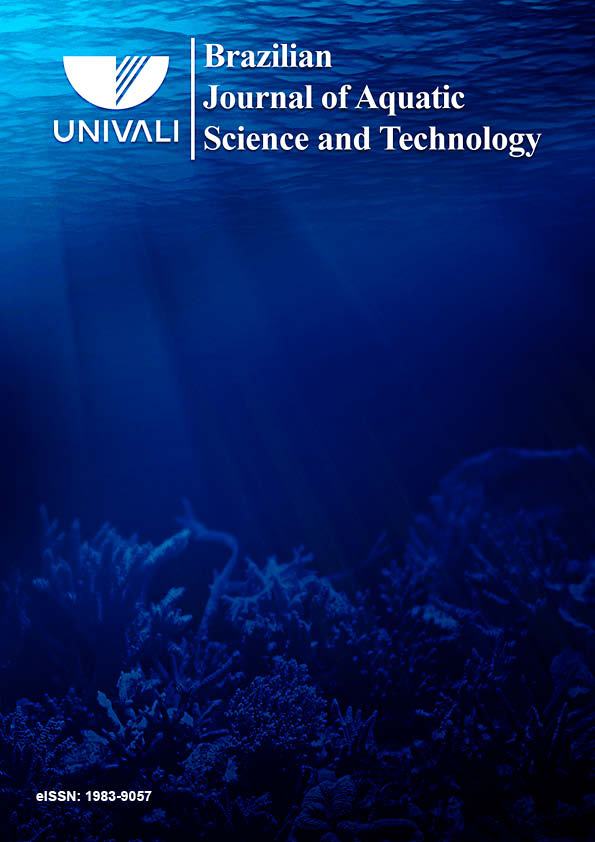A survey of the eutrophication state of an urbanized tropical estuary, the case of the Great Vitória Estuarine System, Brazil.
DOI:
https://doi.org/10.14210/bjast.v20n1.5230Resumo
Although, estuarine ecosystems have an ecological and economical importance as they have a high biological productivity and occur within a unique and dynamic environment, they have been subjected to anthropogenic alterations. The Great Vitória Estuarine System (GVES), Espírito Santo State, Brazil, is not an exception, as urbanization is growing around it with a high quantity of sewage been added to the system. In order to evaluate the eutrophication state as well as the meiofauna response to it, several parameters in both sediments and in the water column were assessed. Orthophosphate, nitrite, nitrate, ammonia, chla and Fecal Coliform counts (FC) ranged from 0.2 to 3.2 μM, 0.25 to 1.14 μM, 1.83 to 0.19μM, 4.19 to 49.23 μM, 0.61 to 6.72 μg/L and 14 to 5.0x104 MPN/100 mL of water, respectively. These results showed that the GVES is under an eutrophication process and that the Passagem Channel experienced the largest impacts. Sewage plays an important role in this eutrophication process as indicated by PCA and correlations tests. The density of meiofauna showed similar values to those found in environments with similar levels of anthropogenic stress. This multi-approach evaluation revealed several aspects of the impacted estuary and could be used as an important tool to manage better the estuary.Downloads
Publicado
2016-09-06
Edição
Seção
Artigos
Licença
Autores que publicam nesta revista concordam com os seguintes termos:
- Os Autores mantém os direitos autorais e concedem à revista o direito de primeira publicação, com o trabalho simultaneamente licenciado sob a Creative Commons Attribution License que permitindo o compartilhamento do trabalho com reconhecimento da autoria do trabalho e publicação inicial nesta revista.
- Autores têm autorização para assumir contratos adicionais separadamente, para distribuição não-exclusiva da versão do trabalho publicada nesta revista (ex.: publicar em repositório institucional ou como capítulo de livro), com reconhecimento de autoria e publicação inicial nesta revista.
- Autores têm permissão e são estimulados a publicar e distribuir seu trabalho online (ex.: em repositórios institucionais ou na sua página pessoal) a qualquer ponto antes ou durante o processo editorial, já que isso pode gerar alterações produtivas, bem como aumentar o impacto e a citação do trabalho publicado.

